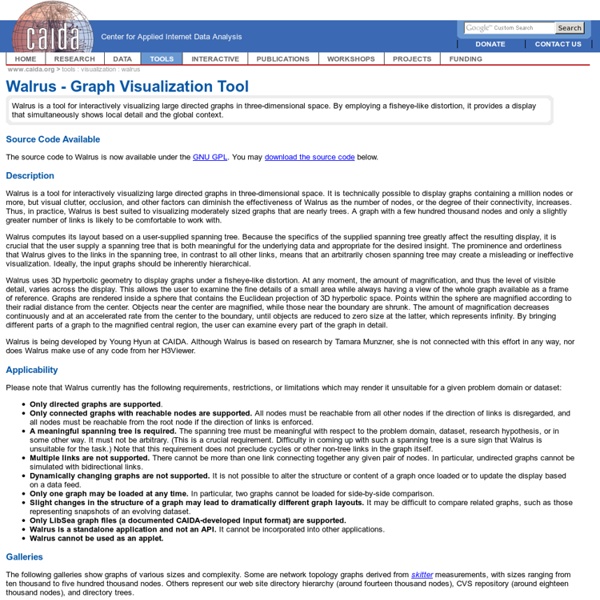Zoom
Trash
Related:



Revised Graphic Organizers Make Mapping Out Ideas Easy—and Savable! Join us on Facebook to get the latest news and updates. Become a Fan ReadWriteThink couldn't publish all of this great content without literacy experts to write and review for us. More Home › About Us › News News | August 17, 2011 Recently revised, three online interactive graphic organizers help students map out their writing ideas or organize information they have learned. Try the new save capability with your students using any one of these interactive mapping tools. Students often have trouble getting started when asked to write an essay. You can’t compare apples to oranges. Still need some convincing? For a short tutorial on how to use the new save capability in select Student Interactives, see ReadWriteThink ReView: Saving Work With the Student Interactives.
SDSC Image of the Internet Universe on Display at New York’s Museum of Modern Art SDSC Image of the Internet Universe on Display at New York’s Museum of Modern Art February 20, 2008 By Jan Zverina A visualization depicting a frozen moment of activity in the Internet universe using computer tools at the San Diego Supercomputer Center at the University of California, San Diego, will be part of a special exhibit set to open later this month at the Museum of Modern Art in New York. The MOMA exhibit, called Design and the Elastic Mind, highlights the dramatic changes we have been experiencing as a society in what once were some of the most established dimensions of human life: time, space, matter, and individuality. Of particular interest is the exploration of the relationship between design and science, particularly the approach to scale. The SDSC image was created by Young Hyun and Bradley Huffaker, researchers with the supercomputer center’s Cooperative Association for Internet Data Analysis (CAIDA) program.
D veloppement avanc avec Eclipse Zest Dans l'article précédent, Introduction à ZestIntroduction à Zest, nous avons vu comment construire un graphe, que ce soit à partir d'un modèle en utilisant les mêmes mécanismes que JFace, ou directement en créant nœuds et branches. Cet article reprend l'exemple de l'article précédent, et se propose de montrer comment enrichir le graphe de diverses manières : soit par le biais de styles personnalisés, de menus contextuels, ou encore par la mise en place d'un zoom, ou de layouts différents. Ce tutoriel suppose que vous disposiez des connaissances de base sur les technologies suivantes : Par ailleurs, nous repartons sur le graphe orienté "branches" de l'article d'introduction, contenu dans la vue "LinkView". Les sources sont disponibles ici (FTP)src-intro-ftp ou ici (HTTP)src-intro-http. La boîte à outils Zest possède plusieurs algorithmes d'agencement pour un graphe, qui modifient la disposition initiale du graphe lors de sa construction. LinkGraphView.java Sélectionnez OpenRoadAction.java
Cytoscape: An Open Source Platform for Complex Network Analysis and Visualization Introduction to Circos, Features and Uses // CIRCOS Circular Genome Data Visualization Gephi, an open source graph visualization and manipulation software The LibSea Graph File Format and Java Graph Library Source Code / Download The source code to LibSea is available under the GNU Lesser GPL. You may download LibSea from either libsea-0.1-src.tar.gz or libsea-0.1-src.zip. A precompiled jar file is distributed with the Walrus graph visualization tool. About the LibSea Graph File Format The LibSea file format allows you to specify the topology of directed graphs using nodes, links, and paths (paths are sequences of links)attach data to nodes, links, and paths in a flexible mannerimplement application-specific conventions and semantics Users can attach data to topological elements (nodes, links, and paths) using attributes. LibSea graph files can also contain qualifiers. For example, there is no direct method of specifying a spanning tree in a LibSea graph file, but this can be easily accomplished with a qualifier. LibSea Java Graph Library It is relatively easy to design a data structure that can compactly represent the topology of graphs, even graphs with millions of nodes. Applicability
Flare | Data Visualization for the Web